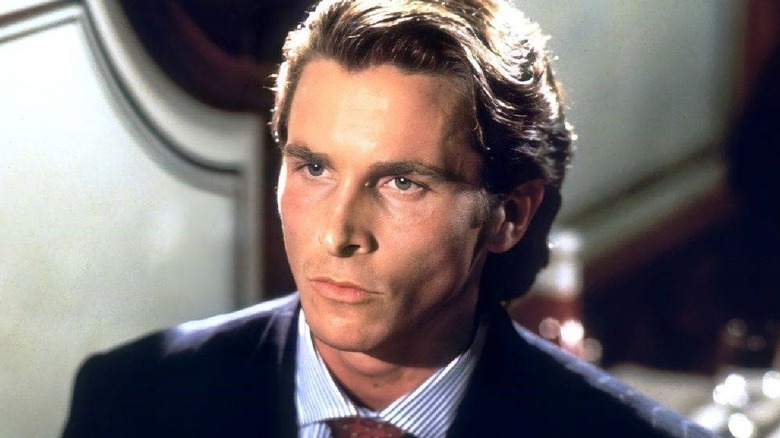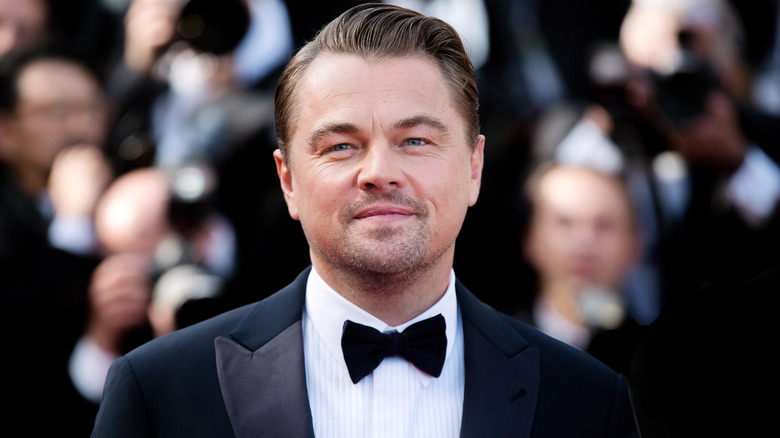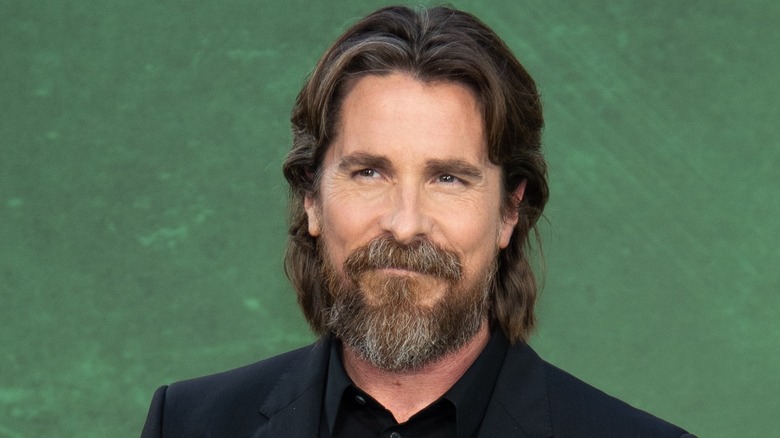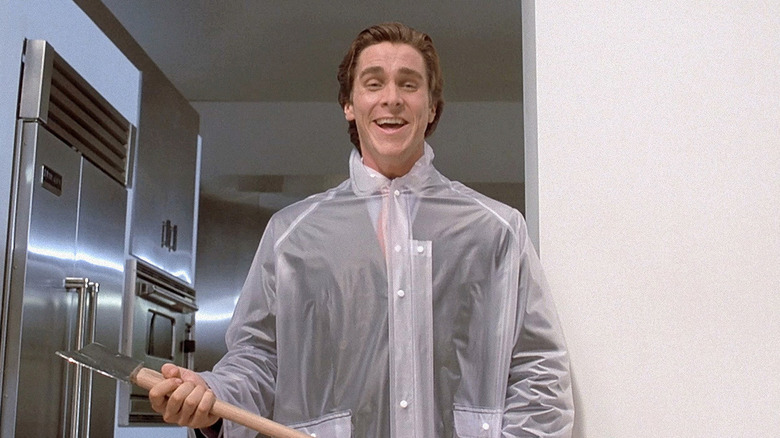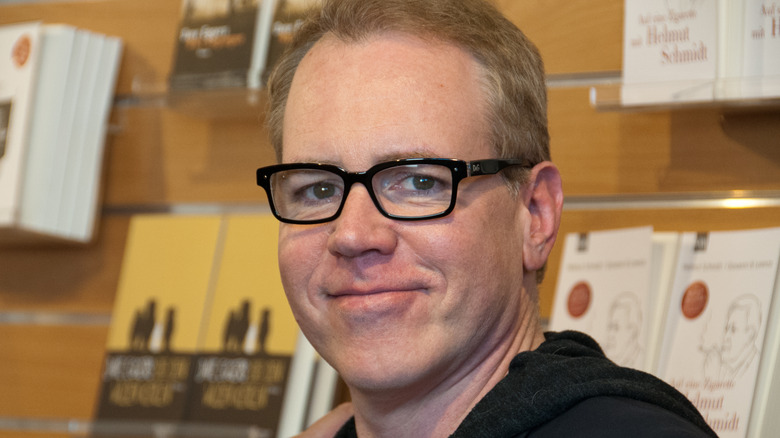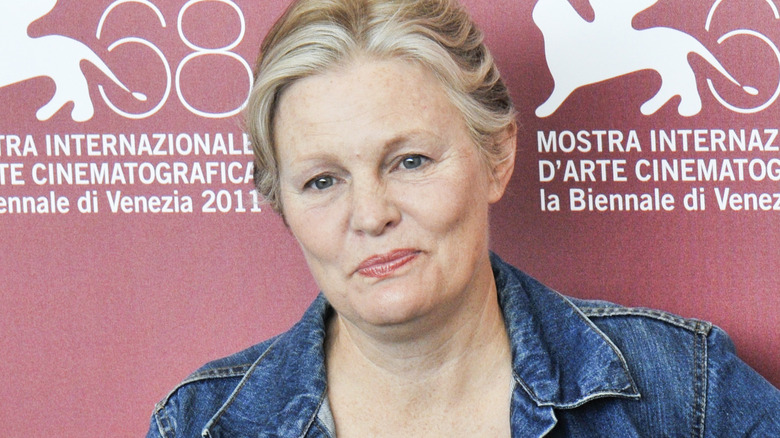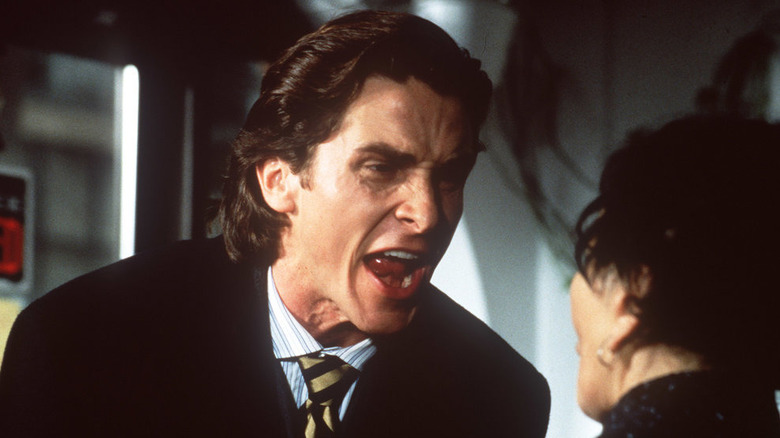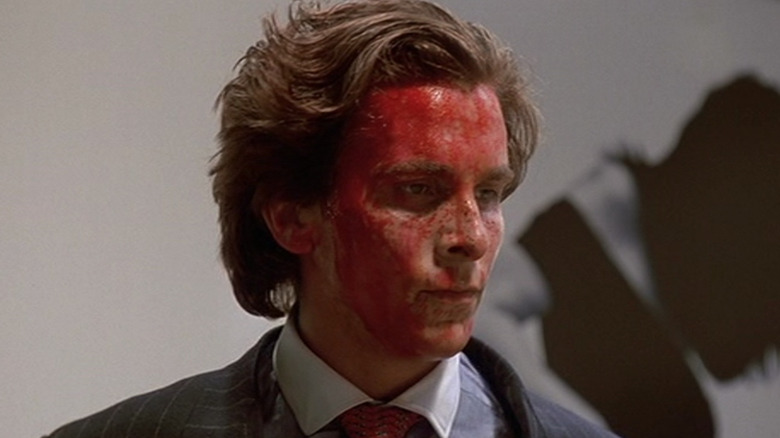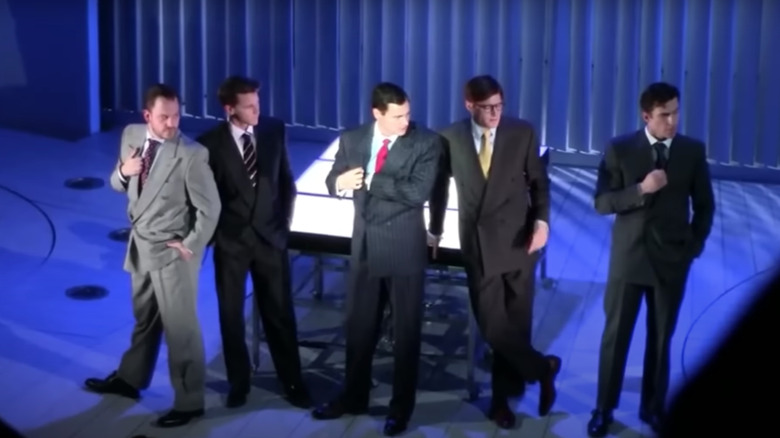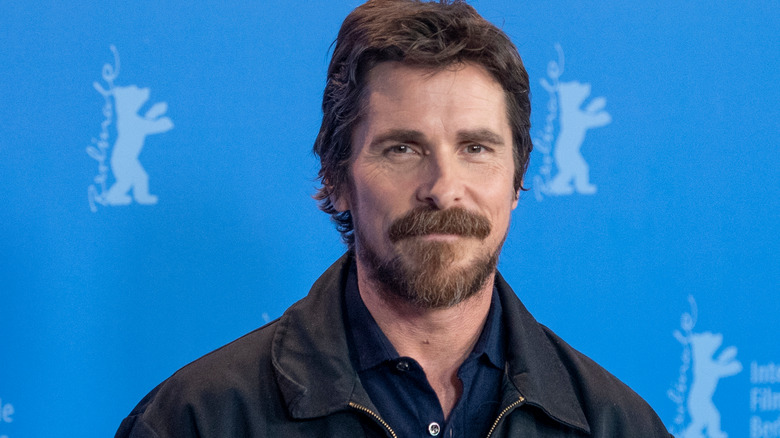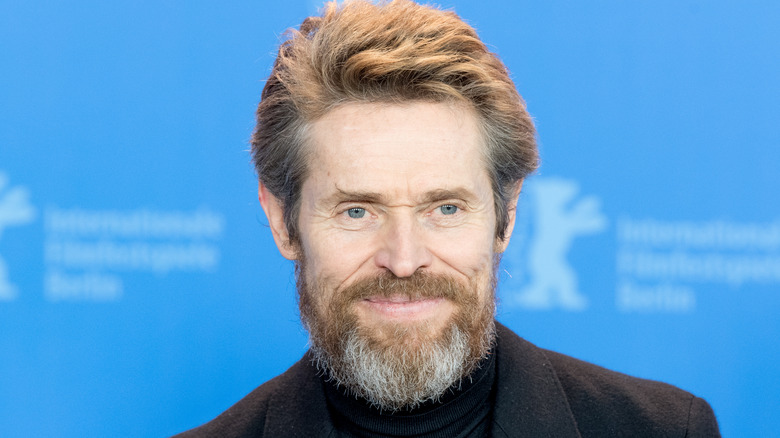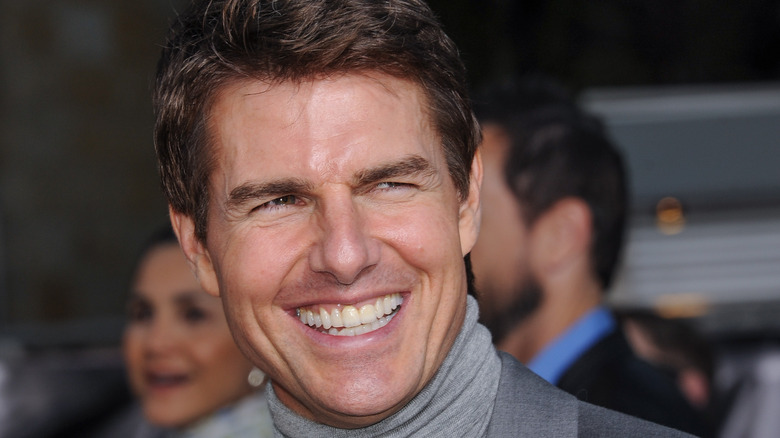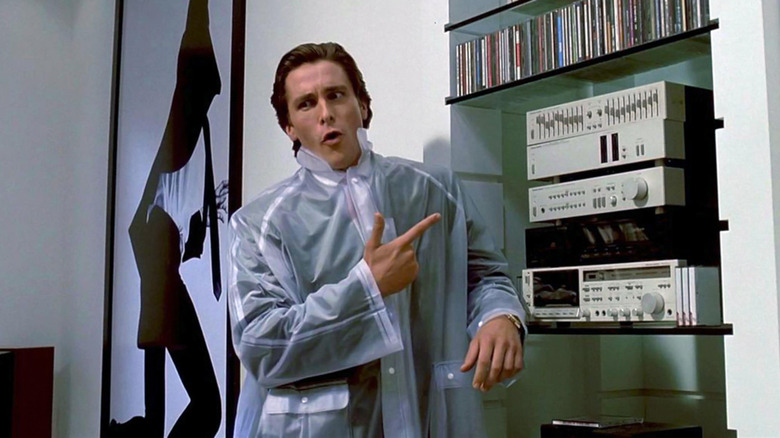American Psycho Facts That Would Even Impress Patrick Bateman
Its graphic violence, pitch-black sense of humor, and biting satire have made "American Psycho" into a modern cult classic. Christian Bale stars as Patrick Bateman, a white-collar Wall Street money-man who wears a mask of sanity to hide his psychopathic inner self. He obsesses over superficial appearances both in himself and the things that represent him, such as his business card. Behind this vain exterior, Bateman indulges in murder, but his mental state calls everything into question as the film employs a level of ambiguity about what is even real.
The story was adapted from the novel of the same name, written by Bret Easton Ellis and first published in 1991. On its own, the book was already controversial, and the film adaptation released in 2000 dragged that controversy back into the spotlight. Bale in the lead role and Mary Harron in the director's chair took a lot of flak throughout the creation and initial release of "American Psycho," but their sometimes misunderstood work has stood the test of time and outlasted the inflammatory detractors. Let's look back at a few facts surrounding the film's production, controversies, and difficulties both on and off set.
Leonardo DiCaprio nearly starred in the film
Christian Bale had been in plenty of movies already by the time he starred as Patrick Bateman in "American Psycho," including a notable early starring role in "Empire of the Sun" at just 13 years old. He was still on the come-up at the turn of the century, and this twisted role marked a major step forward for him on his path to becoming an A-lister. Back when the film was entering pre-production, Bale was a respected actor but wasn't yet a big enough name for the studio to be confident in him as a bankable leading man.
Director Mary Harron wanted Bale for the role right out of the gate, but she almost didn't get her wish. As reported by Little White Lies, Leonardo DiCaprio had read the book and wanted the role for himself. Harron didn't think he was the right fit: "Partly because he was such a big star but also because he had a teenage girl fanbase. I just didn't think he was right for it." Regardless of her feelings, DiCaprio was such a big star — still buzzing from the massive success of "Titanic" — that he was nearly able to take the role by sheer force. Harron stuck by Bale, and DiCaprio would eventually play a less violent but arguably still unhinged Wall Street man in Martin Scorsese's "The Wolf of Wall Street" over a decade later.
Everyone in Christian Bale's life wanted him to turn down the role
The Patrick Bateman character is quite an out there role. Not every mainstream leading actor would be comfortable taking on such a twisted character and doing the various villainous things required for the part. Christian Bale had no qualms about diving into the role, but the people around him had more than enough concerns to go around.
In an interview with Charlie Rose, Bale revealed that numerous people in his life told him to turn down the role: "I had an awful lot of calls saying it was going to be career suicide." Though the film turned out to have the opposite effect, there was something of a valid reason for their concerns. Bale said their worries stemmed from that other "Psycho" movie, where Anthony Perkins's career was dreadfully sidelined after starring as Norman Bates in Alfred Hitchcock's classic horror film (via New World Encyclopedia). The fear was that Bale would be typecast and/or have a hard time getting worthwhile roles in the future.
Bale considered the "American Psycho" role too ridiculous, in his words, to result in him getting typecast. "I was never really concened to take any of those career suicide threats seriously," he said, adding that he found the role exciting.
Casting a British man was an early creative decision
Although he has spent the vast majority of his career putting on convincing American accents, Christian Bale is actually British, or Welsh to get more specific. At this stage of his career, Bale had been using his natural accent far more frequently, so casting this Brit in the lead role of a film with "American" in the title was a bit of an outside-the-box casting decision, but one that director Mary Harron made knowingly.
As Bale explained in a press junket interview, part of what drew Harron to him in the first place was that he wasn't from the U.S., whereas most of the others actors interested in the role were born and raised in America. She wanted him to bring his perspective on America as an outsider to the role. She thought he would be capable of seeing Bateman as a representative of wealth and privilege in a way that a U.S. native might not be able to. Bale described his perspective on the cultural component of the character, saying, "He is the image of, sort of, the American dream of glamour, wealth, you know, sophistication," adding, "Bateman couldn't exist outside of ... New York, outside of his offices."
Bret Easton Ellis considers the story a comedy
At its heart, "American Psycho" is a satire of a particular aspect of American culture. The film and book are both often categorized in the horror genre, while the film is listed in the crime, drama, and horror genres on IMDb. One genre that isn't listed is comedy, but that is the genre that the story's author, Bret Easton Ellis, considers it to be first and foremost.
When speaking to Charlie Rose, Ellis lamented how frequently the book is miscategorized and misunderstood. He never viewed the story as a disturbing work of horror like many did, but rather as a black comedy. He described the tonal balance of the book as four pages of violence and 396 pages of satire. This element of comedy was missed or minimized by many who read the book, and that same reaction carried over into the film.
Luckily, Mary Harron and Christian Bale were both on the same page as Ellis and saw the humor in the piece. In the same interview, Harron described the film as a comedy of manners, while Bale said that Patrick Bateman was too ridiculous to be frightening, adding that audiences should be laughing at him throughout. Some readers and viewers share their perspective (per Reddit), while plenty of others missed the humor entirely but still enjoyed the story for its darker components alone.
Christian Bale made no attempt toward realism
When most actors take on a role, the goal is usually to deliver a realistic, authentic performance. This is typically been Christian Bale's goal as well with the majority of the characters he has played throughout his career, but Patrick Bateman was a major departure. As Bale explained during an interview, he found Bateman too over-the-top and ridiculous as written on the page to ever actually exist in the real world. Because the character seemed so unreal to Bale, he made no attempt to portray him as real.
Bale knew that he was bucking trends with this performance, saying, "It was turning on its head all of the basic rules of acting." His normal process would have involved delving deep into the character's backstory and analyzing his motivations at any given moment, but Bale didn't do any of that with Bateman since he was so cartoonish. As he later told GQ, "I was like, eh, none of that really matters. He's just like this alien." He described how an actor's job is usually to hide their performance, but since Bateman himself is performing as a normal human being every day, Bale felt that gave him the license to let his own performance as an actor shine through on screen. This became an essential layer of Bateman, as Bale doubled down on the performative aspect of the character.
Mary Harron was fired as the director, then re-hired
During the period of time that Leonardo DiCaprio was interested in playing Patrick Bateman, Mary Harron and Christian Bale's vision for the project was placed in serious jeopardy. DiCaprio had enough sway to wrest the project out of Harron's hands and, at one point, he actually followed through on that. The studio and producers preferred the star power DiCaprio would bring over the artistic energy brought by Harron, and they sided with him.
As recounted by Harron to Little White Lies, "I was fired from the movie for a while," after sticking by Bale and turning down DiCaprio for the part. Not only was the lead character re-cast with a bigger name star but Harron was also replaced with a more famous director in the form of Oliver Stone, who had earlier made the similarly-set "Wall Street" back in 1987.
Author Bret Easton Ellis was once quoted as saying he thought DiCaprio and Stone were great fits for the project, but he later went on Charlie Rose to clarify that he was taken out of context and was in favor of the Harron and Bale version. Ellis suggested that DiCaprio and Stone met about the project once, disagreed heavily on the material, and their version abruptly fell apart. Harron and Bale were then brought back onto the film.
Patrick Bateman once gave an interview as Christian Bale
While "American Psycho" was still being shot, Christian Bale gave an on-set interview (while still in the character's hair, makeup, and wardrobe) that was later included in the DVD bonus features. The strange thing about this interview is that it seems more like Patrick Bateman is giving an interview in character as Christian Bale rather than the other way around. He is speaking as Bale and discussing the making of the film in progress, but he is using Bateman's American accent rather than his own British-Welsh accent.
When comparing this interview directly to another Bale interview given away from set, it becomes easier to see the distinctions between Bale and Bateman. The on-set interview finds the movements and mannerisms of Bateman on full display, which are not present when Bale is out of character. The first question of each interview results in him giving nearly the exact same word-for-word answer, almost as if Bateman is parroting what he heard Bale say earlier.
It seems as if Bale was method acting and lodged deep within the character, but this would contradict what Bale has said on numerous other occasions, in which he described Bateman as being a character that he didn't need to get deep into in order to perform. He even specifically described how easy it was to switch Bateman off as soon as the director called "cut," so the lingering Bateman personality in the former interview sticks out as especially strange.
The book was used more often than the script on set
The "American Psycho" novel was adapted into a screenplay by the writing team of Guinevere Turner and director Mary Harron. Sometimes it is safe to leave the original source material by the wayside once a good adapted script is ready, but this was not true in the case of "American Psycho." The book remained a valuable resource throughout the entire production.
In a retrospective of his acting career, Bale told GQ that he referred to the book constantly while shooting. "Any scene we would do and every single day, I had the book by my side and I would read through it every single time," he recalled. The script was useful, of course, but the book was even more important as the north star that guided Bale's performance. He cited Bret Easton Ellis's use of descriptions in particular as coloring the scenes for him more than the economical script could. Bale described Harron as being on the same page with him and that their goals were completely aligned on how to best bring the project to life.
It was turned into a Broadway musical
Of all of the films that could be turned into Broadway musicals, "American Psycho" probably isn't high up on the list of movies that springs to mind. Other outside-the-box theatre adaptations of horror films like "Re-Animator The Musical" and "Evil Dead: The Musical" paved the way for "American Psycho." The show first ran in London at the Almeida Theatre in 2013. After a couple of years of silence, the show was resurrected on Broadway in 2016.
The musical ran on Broadway for just shy of three months with a total of 54 performances. That is far from a long run on Broadway, and the play was met with a mixed-at-best response from critics. Variety criticized the second act and how tame the violence was in comparison to the source material, but praised the songs and how the play captured the story's satirical elements. The New York Times was harsh on the play, writing, "Its conflicts of intention cancel one another out, leaving you numb," and going on to add, "This psycho is neither scary nor sexy, nor is the show in which he appears." Despite a few scathing reviews, the musical still had its fans and managed to pick up a few accolades, including a pair of technical Tony nominations for Best Scenic Design of a Musical and Best Lighting Design of a Musical.
Christian Bale was threatened over the film
The "American Psycho" novel is even more graphic than the film and includes additional sequences of cannibalism, sexual assault, and necrophilia. There were many who considered it excessively violent or misinterpreted the satire as an endorsement of Patrick Bateman's psychopathic lifestyle (via EW). When it was announced that the book was being adapted into a film, the outrage carried over, with director Mary Harron and especially star Christian Bale taking the heat.
As he told GQ in a retrospective of his most iconic characters, Bale was threatened over the film on multiple occasions. "I remember somebody threatening me on the street because some people did object to the film getting made," he explained. "I remember people saying that they were going to do me harm and stuff like that." The irony of threatening real world violence on someone over the depiction of fictional violence was surely lost on those outraged individuals.
Bale also recalled once receiving a phone call warning him that someone was waiting to jump him the next time he walked down a certain back alley that he traversed as part of his daily routine. Bale's immediate response to the warning was, "I'm going to that alley! I want to see what happens!" It turned out to be a hollow threat as nothing happened — Bale said that he even hung around for a while waiting for someone to show up, but nobody did.
Willem Dafoe shot all of his scenes three times
In "American Psycho," Willem Dafoe plays Donald Kimball, the detective assigned to investigate the disappearance of Paul Allen (Jared Leto), which Patrick Bateman is, of course, responsible for. Since they were co-workers, Bateman is a person of interest. Kimball and Bateman have three major scenes together, and Willem Dafoe shot them all three times each.
According to Far Out magazine, director Mary Harron used a creative technique to get an unusual and distinctive performance out of Dafoe: she had him deliver the exact same lines of dialogue from three different levels of awareness. Dafoe was instructed to perform the first take as if he knew that Bateman had murdered Allen, while acting merely suspicious for the second pass and having no clue at all for the third. These different mindsets completely altered Dafoe's performance in both large and subtle ways. Harron then edited parts of all three versions together in post-production to create a single scene that fluctuated drastically from line to line. A video made by the YouTube channel R Raffrody breaks down the three levels of awareness in Dafoe's scenes on a line-for-line basis.
Tom Cruise inspired Christian Bale's performance
When learning that Tom Cruise inspired Christian Bale's performance as Patrick Bateman, you might wonder which Cruise movie in particular provided this spark. The truth is, it was Tom Cruise himself that inspired Bale's performance, not any of his roles. In 2009, director Mary Harron revealed to Vulture that Bale used the real-life Tom Cruise as a part of his process for embodying Patrick Bateman. He called her up one day and described Cruise after watching him on a talk show, saying, "He just had this very intense friendliness with nothing behind the eyes."
This particular Cruise appearance on Letterman might make it easy to see the influence on Bale's performance. The exchange begins with an extremely awkward interview about Cruise's mountain-climbing experiences where he and Letterman seem to lack any real interest in the subject. Cruise is then suddenly filled with joy and laughs maniacally as he tells the story of how he turned off a man's oxygen supply while in an airplane at high altitude and watched him fall him asleep for the rest of the flight. Cruise is unable to stop laughing even as Letterman calls it attempted manslaughter.
Oddly enough, in the "American Psycho" novel, Bateman is next-door neighbors with Tom Cruise.
Mary Harron and Christian Bale raised the budget themselves
Mary Harron and Christian Bale were the two most passionate people involved in the film adaptation of "American Psycho." Before the project was attached to a studio and had a budget in place, Harron and Bale were already working on it together.
Bale told GQ that he and Harron saw eye to eye on the story right off the bat. There were numerous A-list actors who wanted the role — including the aforementioned Leonardo DiCaprio — but Harron chose Bale because he approached the character in a different way than everyone else. When trying to get the budget together, financiers wanted the A-listers, and Harron turning them down spelled trouble for getting her vision for the film made.
After failing to find traditional funding, Harron and Bale took a new approach. They got together with Willem Dafoe, Chloë Sevigny, Bret Easton Ellis, and a few others in New York and held a stage reading of the script as a fundraising endeavor. They successfully got the project financed off the back of that reading, but disaster struck shortly afterward. Bale said that the agents who sold the deal for the film didn't include him and Harron in the package, and they were temporarily ousted from it after raising the money. Bale continued prepping and doing research for the role even while the film was moving forward with other people, because he trusted his gut that it would eventually come back to him.
There was a sequel that was never supposed to be made
"American Psycho" tells a completely self-contained story. The book never received a sequel, and the film adaptation wasn't meant to receive one either. Regardless of the intentions or any sense of artistic integrity, a sequel arrived two years later, called "American Psycho II: All American Girl." Beyond being unnecessary, this awful movie has a reputation as being a strong contender for the title of the worst sequel ever made, according to outlets like The Independent.
Mila Kunis stars as a murderous college student in a plot that has virtually no relation to the original film. The only connective tissue is that Patrick Bateman appears at the beginning of the sequel, but is only shown from behind, with his face out of frame, or in silhouetted profile, and is obviously not played by Bale. Before the end of the opening scene, he is killed off unceremoniously (with his actual death happening offscreen too), and the rest of the movie has nothing to do with him.
"American Psycho II" was a clear-cut case of a studio repurposing an old script to cash in on the success of the prior movie. This faux-sequel was released straight-to-DVD and was universally panned. It belongs to the select category of terrible films to languish with a 0% score on Rotten Tomatoes.
